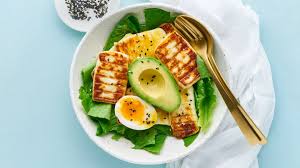Burn fat faster than ever!
Watch your fat disappear!
Ketogenic (‘keto’) diets are back in fashion.
You’ve probably read the headlines and wondered whether you should take the plunge if the results are that dramatic and easy. But are they, though?
This newsletter [or post] will give you the inside line on what the diet involves, whether healthy or sustainable for ‘normal’ people. Here goes …
The keto diet is the ultimate low-carb diet. It’s also moderate in terms of protein and very high in fat.
It’s pretty much like the Atkins diet, but its fans like to describe it as a more modern version, now with a solid scientific basis. Recent research over the last decade or so has provided evidence of the therapeutic potential of ketogenic diets in many health conditions, including diabetes, polycystic ovary syndrome (PCOS), acne, neurological disorders and the management of respiratory and cardiovascular risk factors.
Although dieters tend to lose weight, there is more of an emphasis of the ketogenic diet as a therapeutic diet, which may improve compliance for those that follow it for health reasons.
Like the Atkins diet, the ketogenic diet keeps the body in permanent ketosis. Let’s take a look at what that is …
Glucose is the easiest molecule for your body to convert and use as energy, so it will be chosen over any other energy source. Insulin is produced to process the glucose in your bloodstream by taking it into the cells. It’s the fat-storage hormone produced in direct proportion to the type and quality of carbs consumed. When you lower the intake of carbs in your diet, you force the body into a state of ketosis.
Ketosis is a natural process that helps you survive when food intake is low. When in this state, you produce ketone bodies or ketones made from the breakdown of fats in the liver. They are an alternative source of energy when glucose is not available. Energy from ketones works just as well and feels no different – better, if anything, and the brain prefers ketones.
What do you eat?
The ketogenic diet is largely based on protein and fat, filling and satisfying. This means no hunger cravings and consistent energy levels.
The downside is the diet is rigorous. Cutting out carbs means more than just avoiding the bread, pasta, rice and potatoes that we think of as carbohydrates, but also other foods including many fruits, starchy vegetables, and even some nuts, such as cashews. What you might not be prepared for is having to cut back on alcohol (it’s not cut it out entirely – spirits are OK but watch the sugary mixers, and champagne and wine are not so bad in moderation, but it very much depends on your sensitivity to carbs), and your favourite cappuccino or latte, too.
IN
Meat, fish, poultry, eggs.
Leafy Greens like spinach and kale.
Above-ground vegetables like broccoli, cauliflower, etc.
High Fat Dairy like hard cheeses, cream, butter, etc.
Nuts and seeds
Avocado
Berries – raspberries, strawberries, blueberries, blackberries, and other low-GL berries
Other fats include coconut oil, high-fat salad dressing, and saturated fats.
OUT
Grains like wheat, corn, rice, barley.
Sugars: honey, agave, maple syrup.
Fruit like apples, bananas, oranges.
Potato, yams, etc.
Getting into ketosis
There are no fixed percentages for macronutrient distribution (i.e. not a specific ratio of fats, carbs, etc.), as not everyone is equally sensitive to carbohydrates. This means you’ll have to test where your carb threshold lies by measuring ketone bodies in the urine, blood or breath.
You might be reading this thinking, ‘I can do this’, but the reality can be very testing. One client was committed for 16 days and didn’t, during that time, ever reach ketosis. It can take four weeks to get there, and during the transition period, many experience ‘keto flu’ – flu-like symptoms, headaches, tiredness, and weakness. This happens when the body runs out of glucose and has not yet learned to switch to using fat for energy – that’s because it hasn’t had to for such a long time. Until you become ‘fat adapted’ (i.e. your body has re-learned to use fat), there is a period of low energy. It is this taxing time that can put people off.
The people that do well on a ketogenic diet have a compelling reason to do it. Perhaps one of the chronic health conditions this diet can help.
The remaining mortals will struggle to be committed enough to get into and stay in ketosis.
If you are keen to find out more about ketogenic diets or if you’d like to book a complimentary call to discuss which approach to weight loss would best suit you, please do get in touch.










